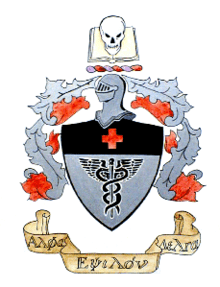Tag: Samantha Gabree ’23
Updates from Alpha Epsilon Delta
by Samantha Gabree '23 on November 27, 2022
Guest Writer
News
 by Samantha Gabree ’23
by Samantha Gabree ’23
Guest News Writer
Alpha Epsilon Delta is a national health preprofessional honors and service organization.
During the COVID-19 pandemic, many patients were unable to breathe due to their lungs being filled with fluid. This was the case with many individuals in New York and as the city’s hospitals overflowed, the patients were sedated and put on ventilators. However, after recovering from the sickness, the patients would not wake up for weeks or even months. Even more perplexing is that when they did eventually wake, there was no indication of brain damage. This phenomenon was widespread, as Dr. Nicholas Schiff, who specializes in treating disorders of consciousness, was not the only neurologist to see this in his patients.
Dr. Schiff and his collaborator Dr. Emery Brown, a computational neuroscientist at M.I.T., studied 795 of these COVID-19 patients who displayed a delayed recovery from the sickness, where 25 percent of these patients took 10 or more days to regain enough consciousness to perform simple commands such as squeezing someone else’s finger. The study also reported that 10 percent of those who were studied took over 23 days to regain consciousness.
Dr. Schiff and Dr. Brown have also recently published a proposal as to why these COVID-19 patients remained unconscious for such a long period of time. These doctors propose a theory comparing the unconscious human brain to that of turtles.
During the winter, turtles can shift their neurons into an unusually quiet state that lasts for months. They burrow themselves in frozen mud, and their respiration becomes minimal. In preparing for the winter season, turtles release the chemical GABA into their brains, allowing the neurons to conserve energy by decreasing the amount of nerve impulses that are fired. In a sense, turtles “auto-anesthetize” themselves. Dr. Schiff and Dr. Brown claim that the combination of sedatives along with having COVID-19 may prompt a similar response in the human brain, and even after the sedatives wear off, the brain may keep itself in this state for a period of time. This theory could be powerful, for if it can be proven, we will have a better understanding of how to preserve and protect the brain. Researchers and doctors would be able to find new ways to aid people with brain damage by putting patients into an unconscious state on purpose.
While it is too early to rely on this turtle-human brain analogy, this research could provide a new method for aiding recovery and even saving patients from brain damage.
